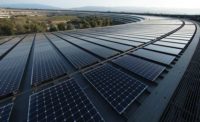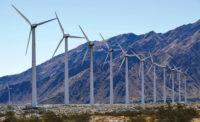Natural gas pipelines and power plants and solar and wind power projects will drive energy-related construction in 2019. Power projects are expected to increase between 3% and 8% over 2018, exceeding overall expected construction growth of between 2% to 5%, according to a Dec. 12 construction outlook presentation by Ken Simonson, chief economist of the Associated General Contractors of America.
Other forecasts reflect a similar view. The U.S. Energy Information Administration, in its December Short-Term Energy Outlook, forecasts that utility-scale electricity generation from natural gas-fired power plants will continue to increase while other sources of generation will remain relatively flat.
The Gulf Coast Energy Outlook, produced by Louisiana State University, forecasts a flat outlook for petrochemical growth along the Gulf Coast in in 2019 because of a slow-down in Asian demand, increased interest rates and continued trade policy uncertainties. “Outstanding capital investment announcements… may be pushed out in time owing to a number of changes in the global economy and recent political uncertainties,” according to the outlook. The outlook expects a huge upswing in 2020, however.
Here are what some other experts are saying about what they expect in the energy sector in the coming year:
“Energy construction will continue to grow, impacted by both positive and negative forces. On the plus side, we expect renewable resources to be ever more prevalent and affordable and anticipate a rise in private ownership of distributed energy resources as customers become more informed and connected to their energy supply. On the flip side, natural and cyber hazards will increase the focus on energy recovery after disasters, pre-planning for vegetation management, heat resistant infrastructure and early warning systems.”
—Annika Moman , senior vice president of energy for AECOM.
“A new industrial revolution of distributed generation, renewable energy, grid modernization, changing power generation assets, and new approaches to capital will require new strategies by utilities and commercial and industrial consumers. With those organizations, heavily reliant upon energy and construction solutions, we see stakeholders employing rapid adoption of technology, including monitoring and diagnostics; more aggressive risk management and decision-making approaches; and a changing workforce that can manage the disruption.”
—Greg Brown, senior vice president, director of business development for power for Black & Veatch
“Ideally, the United States will enact a version of the Energy and Natural Resources Act sponsored by Sen. Lisa Murkowski (R-Alaska) and we will take a comprehensive approach regarding energy for the first time in decades. Absent that or in parallel with that many states, large customers, and utilities are likely to continue to independently support advancement of clean sources of generation and clean vehicles. Both producers and consumers of energy are likely to see competitive pricing and become increasingly more comfortable with evolving technologies. This will require an exciting and new approach toward how we plan, build, operate, measure, and communicate across an electrical system that was originally built for something completely different.”
—John Olander, president of Burns and McDonnell’s transmission and distribution practice.
“In 2019 and 2020, an unprecedented level of wind installations has the potential to create supply chain constraints, especially in regard to labor, materials, equipment and logistics. In addition, the challenge of increasing tariffs will continue to present price uncertainty for the renewable energy industry. EPC contractors are working diligently on resource strategies in order to mitigate potential impacts and help customers meet ambitious [production tax credit] goals.”
—Tim Maag, vice president and general manager of wind at Mortenson
“Expect 2019 to bring the onset of major reform to regulatory rate making at the state and federal level aimed at strengthening the financial health of clean power generators and stimulating further investments in a resilient electric power grid. Because of the dramatic acceleration in the use of new technologies for power generation and delivery, existing rate-making policies no longer support the economic and societal goals required to sustainably satisfy stakeholders.”
—Jim Mayer, president of TRC
MARK YOUR CALENDARS Engineering News-Record will host a webinar on the 2019 Energy Construction Outlook at 2 p.m. eastern on Feb. 13. Keep an eye open for registration information.





Post a comment to this article
Report Abusive Comment